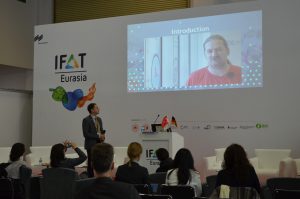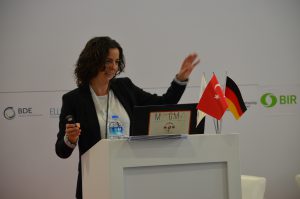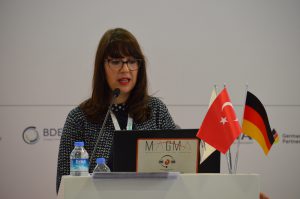IFAT Eurasia, the leading trade fair for environmental technologies took place at the Istanbul Expo Center on March 28-30, 2019. D-NOSES was there to reach a wider audience of young environmental engineers and facility managers that routinely face odour complaints and issues. The team represented the project at the ISWA stand, and then did a special presentation on Odour Management and the advantages of the D-NOSES approach for all stakeholders.
The presentations started with a short introduction to the project and the debut of the new project video. During the introduction, the events leading to Chile designating odours as an environmental contaminant were used to illustrate the problems with the present approach to odour management, and how D-NOSES offers a balanced and more effective alternative.


Cyntia Izquierdo from AMIGO then compared the traditional methods of odour management and the advantages of the citizen science approach. The human nose is still the best odour sensor we have available and can be used as a reliable source of data.
Rosa Arias from Ibercivis continued with her presentation on how the project will co-create the International Odour Observatory. This will be a one-stop-shop to support all stakeholders in odour management issues and specifically on how to make full use of the D-NOSES method to their advantage. The observatory will promote balanced and creative discussions between the different actors that focus on solutions that make a difference in people’s lives. After all, D-NOSES is about measuring, managing and minimizing the real-life impact of environmental odours.

After the presentations, feedback from some of the facility managers present confirmed that the cost-efficiency of the method makes it an attractive proposition for industry. By utilising citizen science, the residents around a facility can form a permanent network of auditors that can monitor odour emissions in real-time at little to no cost. Through dispersion models the odour data can be linked to particular activities at the site. This not only allows a quick response to unforeseen issues, but also offers a valuable diagnostic tool for troubleshooting odour emitting processes at the plant. Others were also particularly interested in the ability to track the sources of odours using the dispersion model and so distinguish emissions from facilities that are near each other.
See below for photo’s of the session, and check the downloads section for the presentations.